He Sent His Son
This song has the sway of a slow waltz. Three beats, then three beats. It has all the sacredness of a song centered on Jesus Christ and the reasons He came to earth. How do you find a movement that matches the mood, the gentle beat, and the meaning of this song?
Here’s one idea.
Tell the children you are going to do one set of movements for the questions of this song, and one set of movements for the answers of this song. Hold up the posters with the patterns. (An example is below)
Use a paper plate movement pattern to ask the questions. Practice this movement pattern with the children.
Use another paper plate movement pattern to answer. Practice this movement pattern with the children.
Sing the song and do the movements. (A video is below)
The Questions –
Paper plates are gentle extenders that help the children focus on the paper plate instead of being conscious about their body movements. Swish, tap, tap, with the taps moving from place to place is a great way to move to the gentle waltz beat, yet remain gentle. The different placements are the challenge.
Swish (rubbing the plates past one another like picture above) tap tap (on your shoulders). The swish comes on the beat right BEFORE the first word. The two first taps land on the words “could” and “Fa-.”
Swish tap tap (on your knees). Swish on “tell.” Taps on “world.”
Swish tap tap (on your elbow). Swish before “of love.””Taps on the words “love” and “tender-.”
Swish tap tap (on your calves). Swish on “-ness.”
Notice that each of these movements cross the midline (a pretend line dividing the body in two drawn down from head to feet). Because they go from the top of the body to the lower half, they also cross yet another midline.
(Note: Why is a movement crossing the midline such a big deal? It affects the brain’s ability to communicate with the two sides, it affects fine motor coordination by the hands, and it affects the brain’s ability to read. http://www.ot-mom-learning-activities.com/crossing-the-midline.html) It is a huge skill for the children to do both purposely and playfully.)
Usually once I start a movement pattern, we just continue it over and over again. Because this is a long song, it will keep the children’s interest peaked if they have to follow a pattern that is a little complex. Instead of just showing them a four step pattern like above, I am going to use a map with more patterns.
The Answers –
Practice the rainbow arc and swishes pattern.
This is a song of questions and answers. For the answers to the questions posed in the song, I will use a rainbow arc back and forth, then swishes on my legs, followed by three plate turns.
Here is the map:
The End of the Song –
Notice there is a place for the piano to do the little interlude after “rise with living breath.” (It says music music music.)
Notice after “Help others on their way” the pattern changes again because of the changes in the music.
The Video
Here is a video that puts it all together.
(My feeling is that the recorded music we did this video to is a little slow, but it will give you the idea.)
This activity stimulates the brain in logic ways, kinesthetic ways, musical ways, crosses the midline, and is a whole bodied way to participate with the song.
We practice each pattern together, then we put them together to sing the whole song. It is such a feeling of accomplishment. I call out “Freeze!” As the children are frozen, I often bear my testimony about how Heavenly Father works with us, like we worked together for this song. I let them know how much I love Jesus Christ. It is a sweet moment.

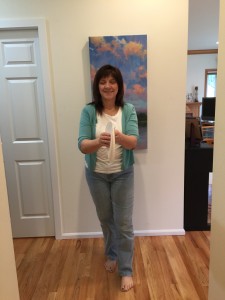
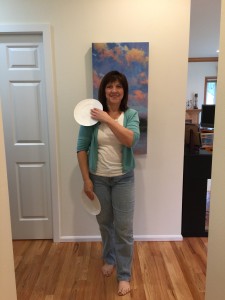
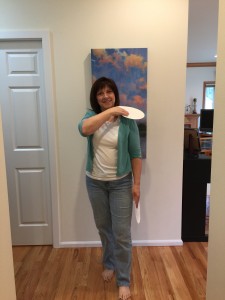
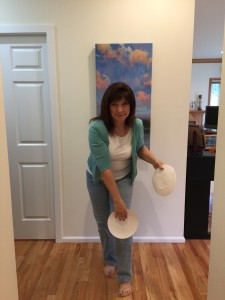
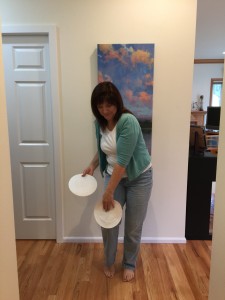
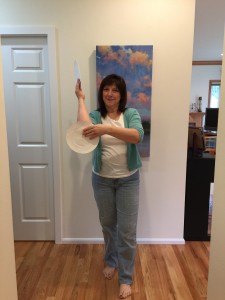
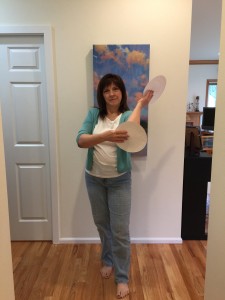
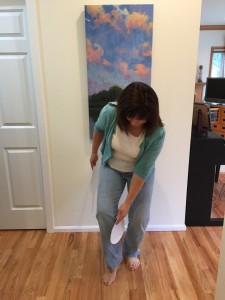
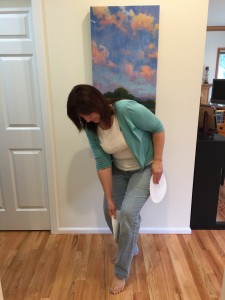
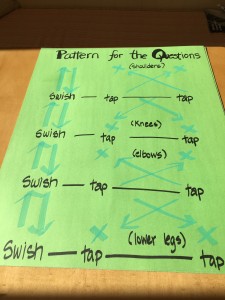
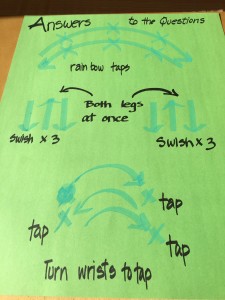
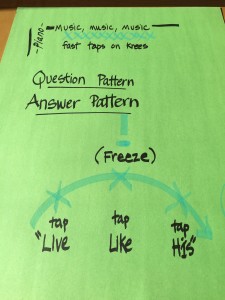
Melinda
My kids loved using paper plates a few times last year. I will try this soon, but curse myself for not taking dance class longer — it is hard for me to visualize when and how quickly you are moving. I will practice in the mirror to a recording! Thanks for all your work and good ideas.
Sharla Dance
Ahhh! Melinda, you remind me that a youtube video might be appropriate here. I will try to get that up and let you know. Thanks for responding!
Jessica Williams
Sharla, Thanks so much for all of these great ideas. I have been using several from here and your book and I am loving primary singing time and the children are too. I would LOVE a video of this activity too.
Valerie B
I was so excited to get the notice from YouTube that you posted the dance. Thanks so much! It really helped. I was trying to do it too fast. Thanks for all the work you are doing. Your influence is being felt all over the world and making a difference 🙂
I do have a question for you. I am teaching the song My Savior Can Heal My Soul which is in 6/8 time and want to create a dance for it. The song has a lilting feel to the verses and the chorus has the piano play each beat giving it a more gentle sway kind of feel. With a lilt feel what kind of rhythm dance would you suggest?
Sharla Dance
Is this song on youtube or anywhere so that I could hear it? I’d love to see what we could come up with!
Valerie B
Unfortunately there isn’t. Here is a link to the words: https://www.lds.org/music/text/other/my-savior-can-heal-my-soul?lang=eng And here you can find the sheet music: https://www.lds.org/music/library/music-for-children?lang=eng
Erin C.
Thank you for the video! I could follow the map but the video just makes it even clearer in my mind.
Brenda Daniel
I can’t find the you tube video. I would love to watch it. Can you post the link? Thank you so much you have helped me to think about teaching in new ways and that has been exciting
Brenda Daniel
I found it thanks
Angela
I can’t find the video. Is there a link?
shauna whiting
hi carrot friend!!
Sharla Dance
Hi Shauna, It was so fun meeting randomly and eating carrots together (YOUR carrots… thanks for sharing!)
kelly jones
Hello! I’m new to this calling of teaching music. Is this an activity to do once the children have already been taught the words and have a good handle on them?
Also, do you explain the actions and show them before singing the song with them or do you just get right into it and have them follow along?
Thank you!
Sharla Dance
Dear Kelly,
One of the great things about moving to the music is that you start to feel the beat and rhythm of the song that the words all ride on. You hear the melody without having to sing, yet you are engaged. I don’t teach the words first. I say “This is the pattern. Follow me.” I start right in with the pattern and sing the song. Another benefit is that if the children are engaged with the activity, the words start to enter the “back door.” They seem to learn the words faster once they have done a couple of activities (3 different weeks) with the song, and you don’t have to rehash the words over and over again.
Katrina Pearson
This is wonderful! I can’t wait to try this in a few weeks when we start learning this song. I’m new to this calling and I can’t tell you what a blessing it is to have found your site. (It was fun to connect that I danced on SPAC at BYU with your son too)! Your last response to the comment above made me think of a question I had about how long to work on a new song. When you introduce a new song do you use the whole of singing time to work on it? Do you mix it up with other songs? Do you work on it for those 3 weeks in a row or break it up? I would love any insights you have! Happy to see you’ll be in Atlanta in March-hopefully I can sneak in.
Sharla Dance
Unfortunately I won’t be in Atlanta in March. They must have last year’s schedule up on the website.
About singing time, I do an activity with a song for about 5 to 7 minutes, then I switch to a new song and a new activity. Line by line, precept by precept they become old friends with the songs in about 3 to 4 weeks. Each week of that run, I use a different activity with the song. That means I teach about 3 songs a week, so the children are learning 3 different songs in three weeks.
Beth
Thanks for this idea! I was struggling on how to teach this song tomorrow and this is absolutely perfect! And for some reason, a friend of mine gave me a billion paper plates this week and I feel so blessed to have the materials!!
Beth
As a follow up, I taught this song today to each of our Primaries (junior and senior) and with varying levels of success. Junior primary could barely figure out how to “swish” and then tap opposite shoulders, so we actually just did that for the whole song, and then it kind of turned into, “Follow what I do”, and every once in a while I would switch it to a rainbow tap or just tapping in front of me. I never even brought out my posters.
Senior, on the other hand, already mostly knew the song, so that was kind of nice, but I still never brought out my second and third posters (I added in the leg taps for the piano and the rainbow tap at the end, but past that, we just did the question sequence the whole time.)
I’m not sure if my kids (and, specifically, me) are just uncoordinated and don’t have dance-brains or what, but only doing the first sequence worked, and kept them busy. The younger kids of Senior still struggled to figure out the sequence.
Regardless, everyone loved it, even if they didn’t sing, and it kept them engaged while learning a long verse!
Thanks!
Colette Moss
I appreciate you response here as I had a pretty similar experience. I’m reviewing tomorrow and will give it another go, lol.